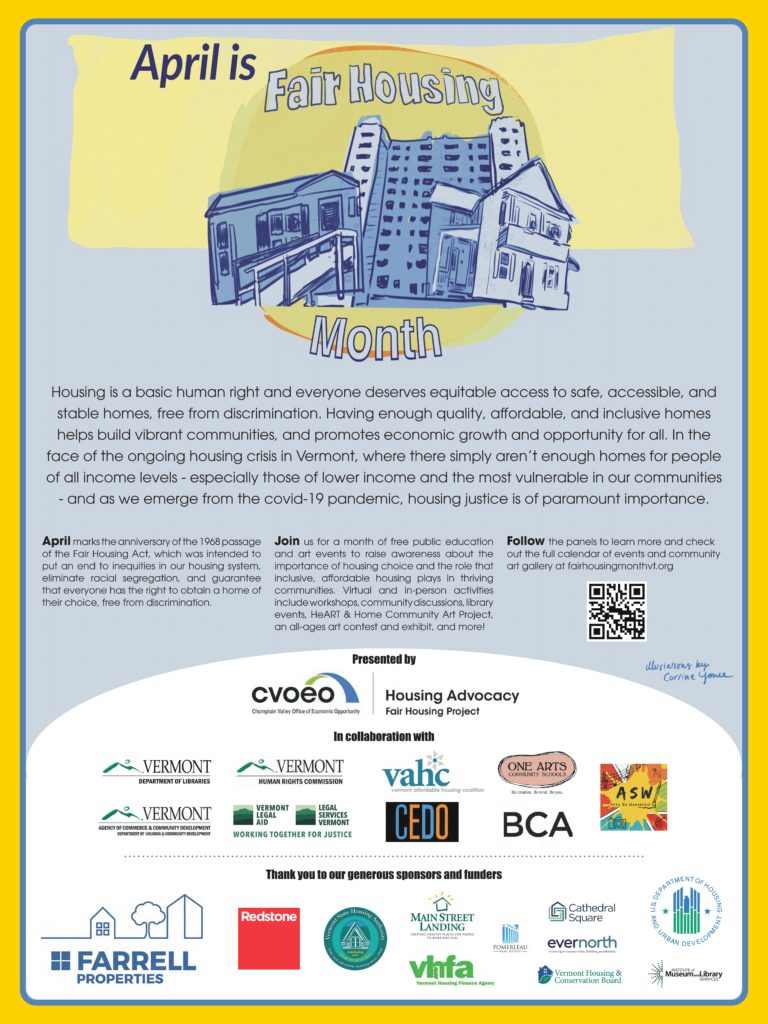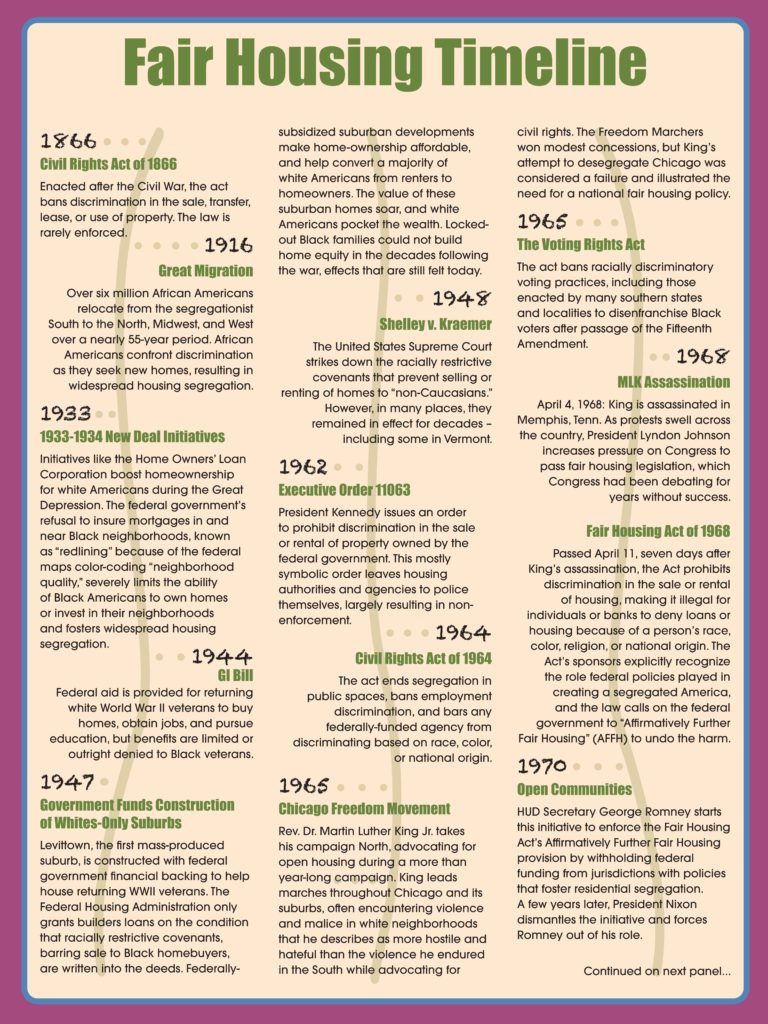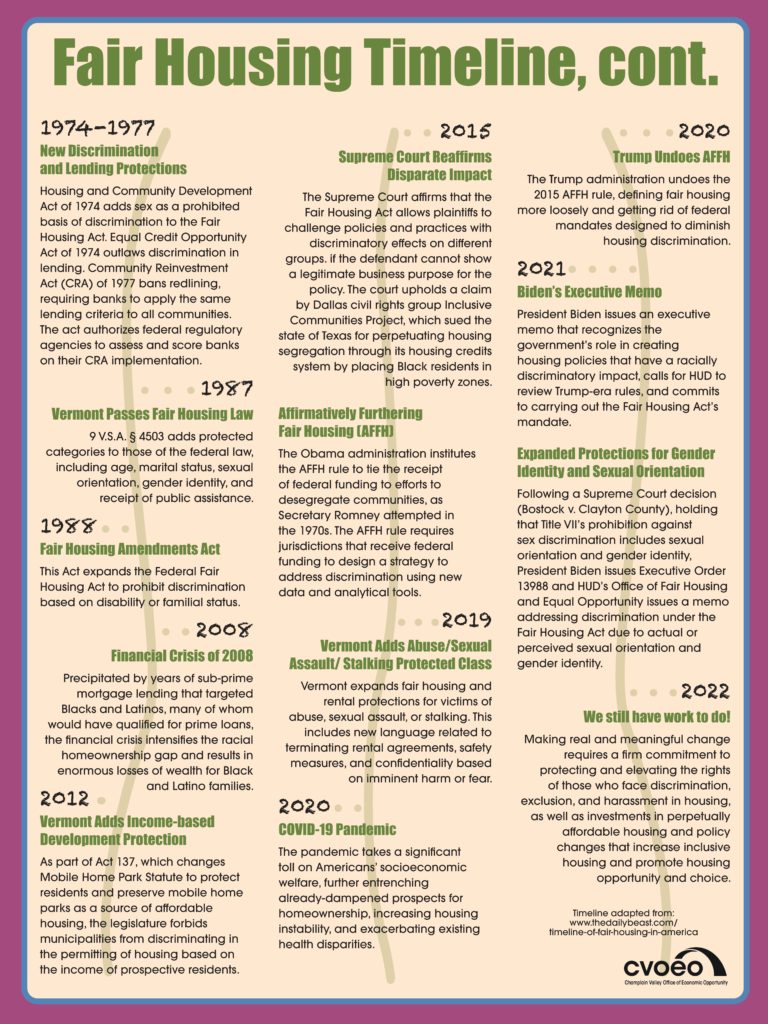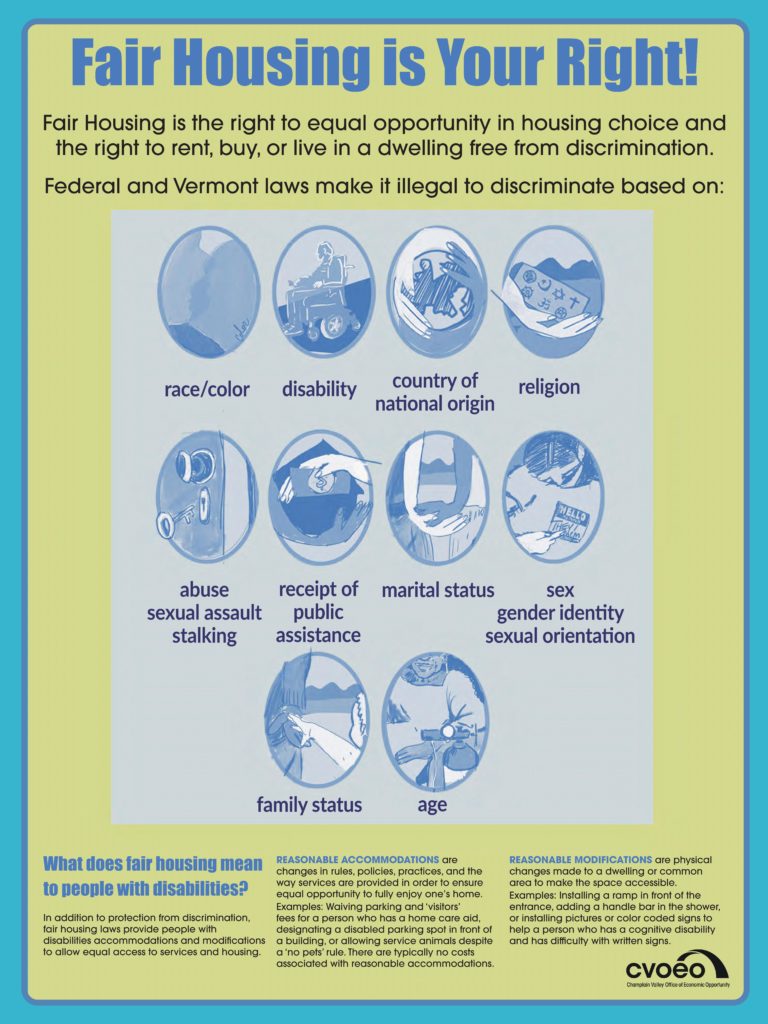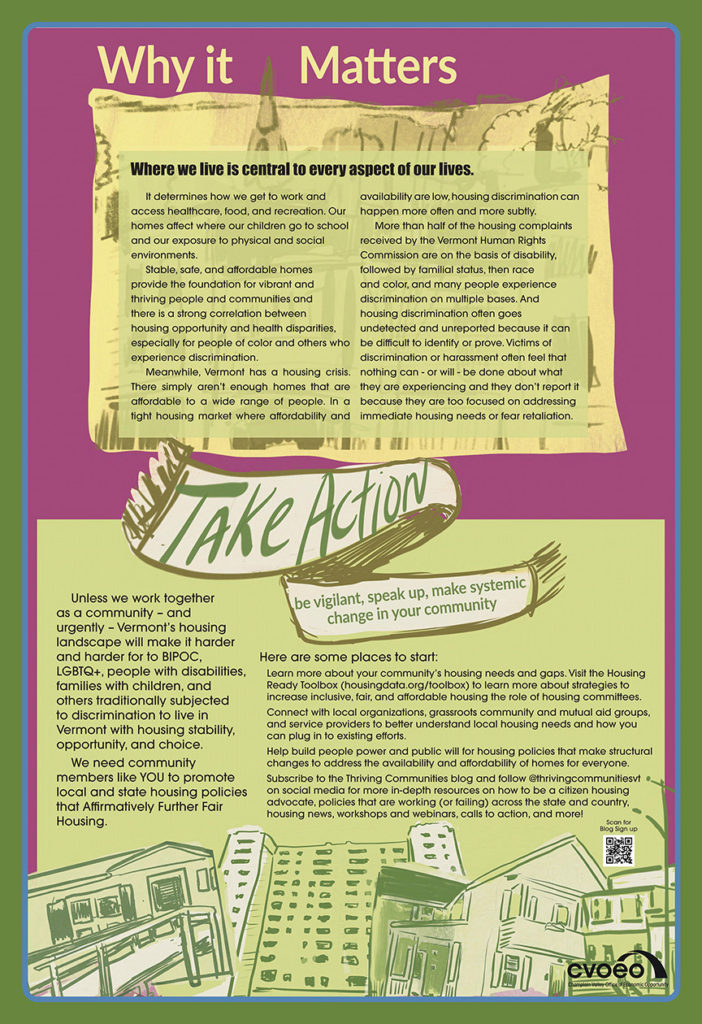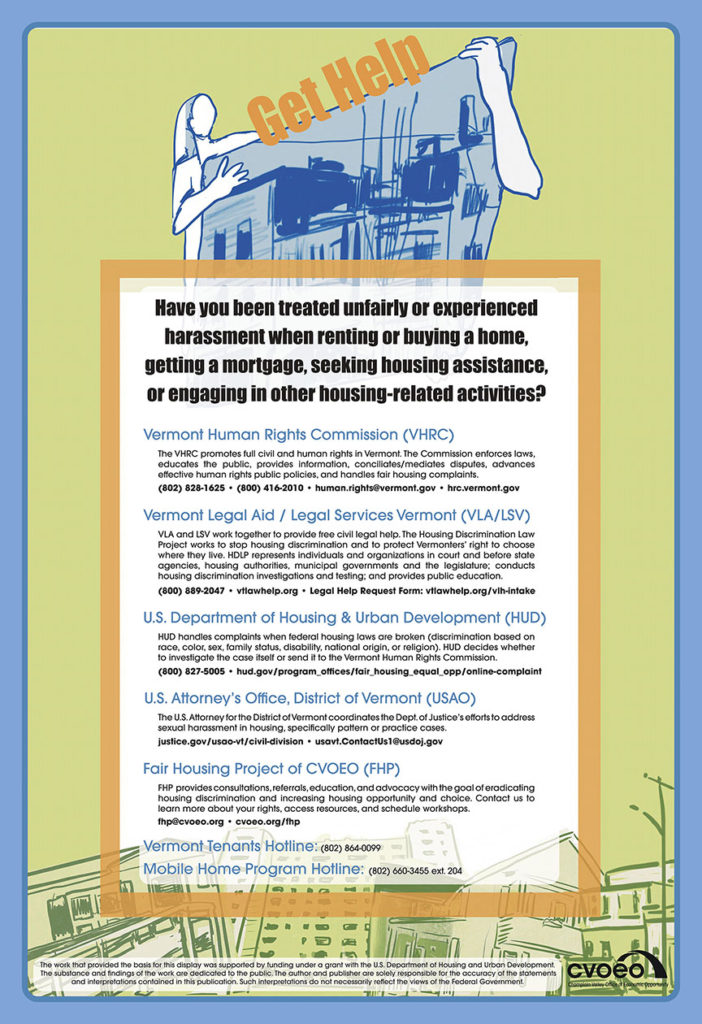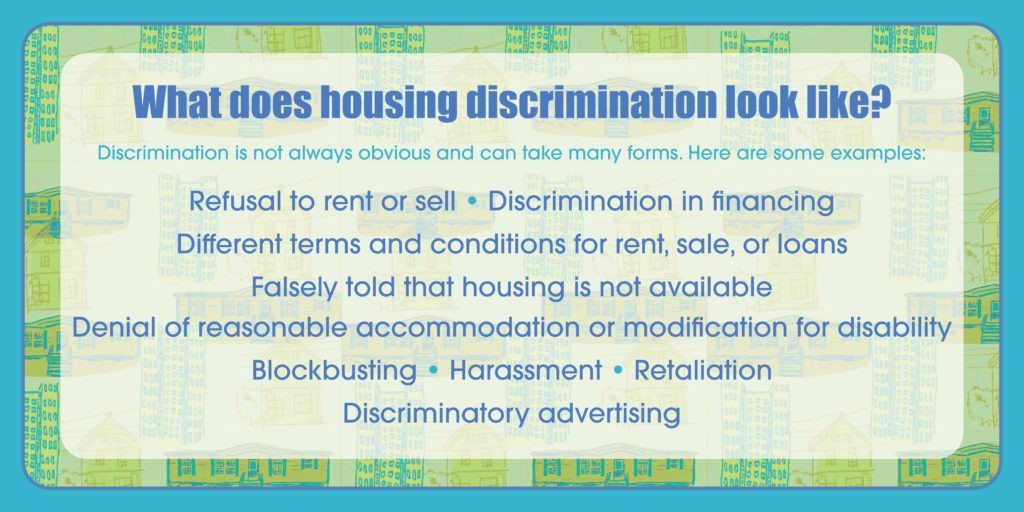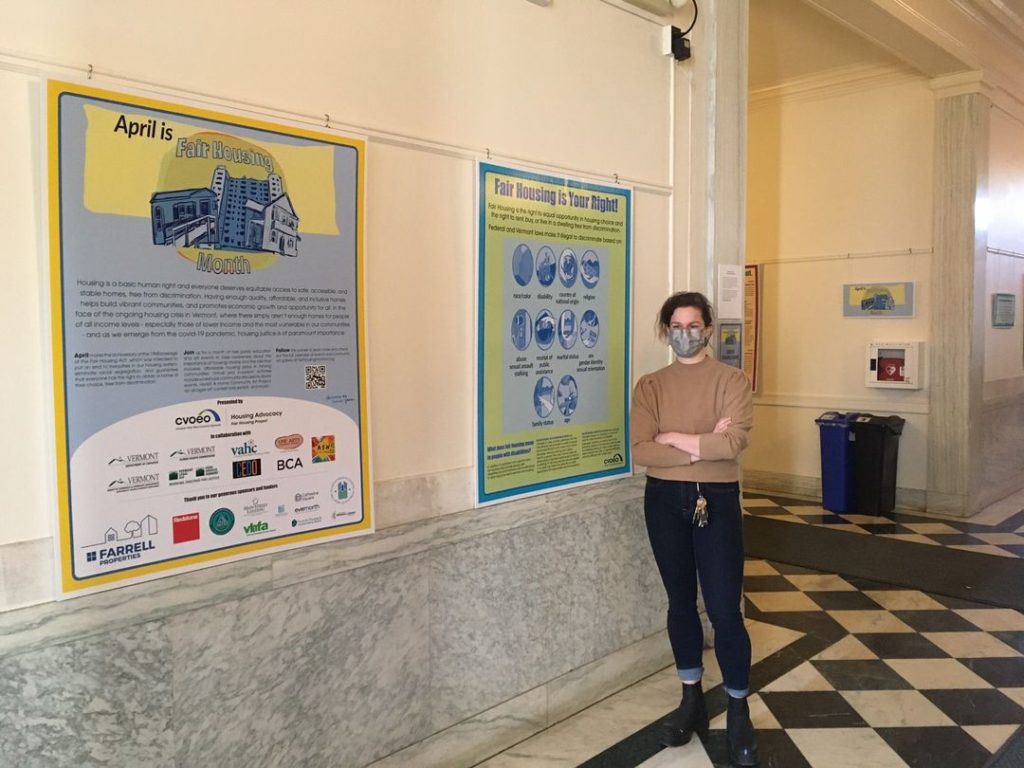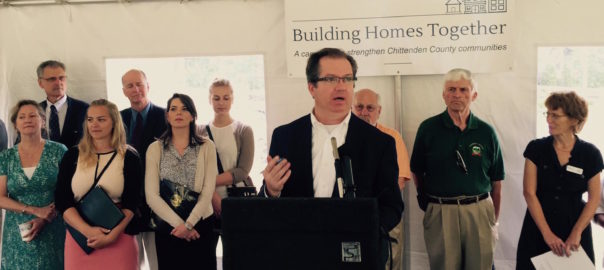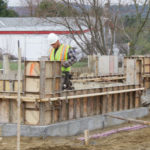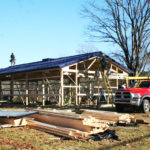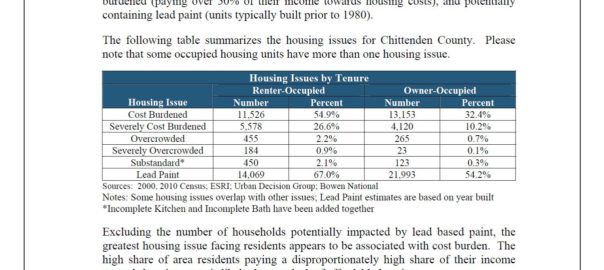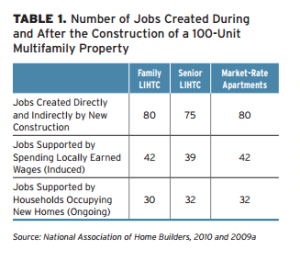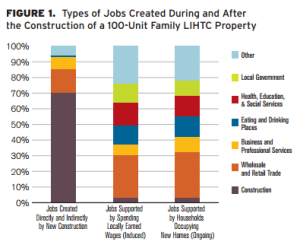Our first #FairHousingFriday of the month happened last week! Featuring Katherine “Deac” Decarreau, Executive Director of the Winooski Housing Authority, Nate Besio, Peer Advocate Counselor Coordinator at Vermont Center for Independent Living, Carol Jaramillo, Community Builder Northgate Apartments, and Bhagawat Pudyel from the Financial Futures Community Ambassador Program at CVOEO, this conversation focused on the barriers to housing development, what kind of housing we are building, and why (or why not) the housing we are developing meets the needs of our most vulnerable community members.
In this rich conversation on housing, we heard about barriers our current available housing poses to folks who fall into Fair Housing protected classes, such as families who rent, folks with mobility needs, and New Americans. We also discussed solutions advocates would like to see implemented, like housing opportunities for folks who are recovering from addiction and not yet ready to live independently, and creative affordable housing solutions that fit the unique needs of the neighborhood. We also talked about tools, such as inclusionary zoning, that municipalities, like Burlington, use to incentive affordable housing, but rules that disincentive developing housing that the community needs, such as 3+ bedroom apartments.
Join Us for Our Next Fair Housing Fridays!
- Friday, April 22nd, 12:30- 1:30 PM: “The Unique Challenges and Opportunities of Mobile Home Parks”
- Friday, April April 29th 12:30 – 1:30 PM: “Is Building More the Cure?”
If you missed it last weeks’, you can find our full recording below.
Resources shared as a part of this Fair Housing Friday:
To learn more about Fair Housing Month and upcoming activities: https://fairhousingmonthvt.org/
To learn more and get help: https://www.cvoeo.org/get-help/fair-housing-and-discrimination
A finding housing resource: https://www.housingdata.org/find-rental-housing (you can search specifically for accessible units)
Home Access Grant Program, funding available for reasonable modifications: https://vcil.org/services/home-access-program/
And coming up this week:
- Art Drop Off for the Arts So Wonderful Art contest! Sunday April 24th from 11 am to 5 pm, or alternative dates at request. Read our full Call to Artists here
- Wednesday, April 20th, 12pm- 1pm (zoom) : Fair Housing: More Than Just Words Lunch and Learn Series – Assistance Animals and Reasonable Accommodation, Hosted by HUD’s Field Policy & Management team
- Wednesday, April 20th 2pm – 4pm (zoom): Bridging the Racial Homeownership Gap: Special Purpose Credit Programs, Hosted by the National Fair Housing Training Academy
- Wednesday, April 20th 5 pm – 7 pm (Contois Auditorium, Burlington VT): Fair Housing Comes Home: A conversation with landlords, property managers, and housing advocates, hosted by CVOEO’s Fair Housing Project and Community Action Staff
- Thursday, April 21st 3 pm – 3:30pm (Facebook Live): NVRA Live with Fair Housing Guest Speak Jess Hyman, hosted by Northwest Vermont REALTOR Association
- Thursday, April 21st 7 pm – 8 pm (zoom): Fair Housing and Tenant Skills workshop for CHT Residents, hosted by Champlain Housing Trust for CHT residents with CVOEO’s Fair Housing Project
- Friday, April 22nd 5 pm – 8 pm (Burlington City Hall): Arts So Wonderful – Youth Take Over Youth On Boards, hosted by Arts So Wonderful
Throughout the month of April:
- Arvin A Brown Public Library in Richford, VT has a story walk highlight the book A Chair For My Mother, Follow the pages of this book along a trail and think upon the thoughtful questions posed!
- CVOEO’s Fair Housing Project has designed and installed this Fair Housing exhibit in Burlington City Hall, featuring our updated protected classes iconography, ways to become an advocate, and a brief history of Fair Housing
- CVOEO’s FHP is partnering with Arts So Wonderful for an art competition and cash prizes! Drop off your work April 18th or April 24th
- Check out 77Arts Installation , Gesture of Something Like Home, up until June 2nd

